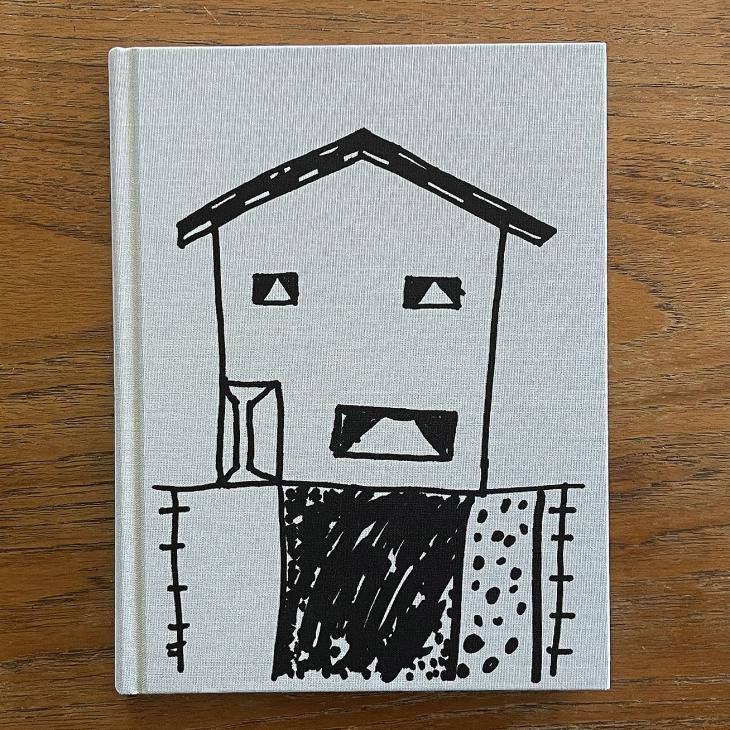A Room of Their Own
Susan Meiselas, 2017
Reviewed by Daniela Gonzalez, A23 (BFA)
Susan Meiselas is a photographer who is well known for her documentation of human rights issues. Meiselas joined the Magnum Foundation in 1976 and is currently the first woman to be the President of the foundation. She has made it her goal to expand the diversity and creativity used in documentary photography, and their work is proof of that. Meiselas has worked on several community projects, along with creating artists' books consisting of her documentary photographs of the Kurdish people and the Dani Tribe. She has also worked on Archives of Abuse which is a series of works from throughout her career that all relate to the issue of domestic violence. Following this, A Room of Their Own was created, showing the next phase of the healing process for those affected by domestic violence. This artist's book is a visual narrative published in 2017 that includes photographs, testimonies, and art works. It centers around the experiences of women in refuge in the Black Country, UK as they share their stories of domestic abuse and their experiences starting a new life in refuge alone, or with their children.

This project commenced when Susan Meiselas was invited by Multistory, a community arts organization in the UK, to work on a project with them. Meiselas actually starts the book with 3 spreads dedicated to these worrisome headlines depicting the domestic violence issues that women face in this area. This is what really drew her focus towards this issue and it was once she set foot into a women's refuge that she felt connected to the mission and confirmed that this would be the focus of the project.
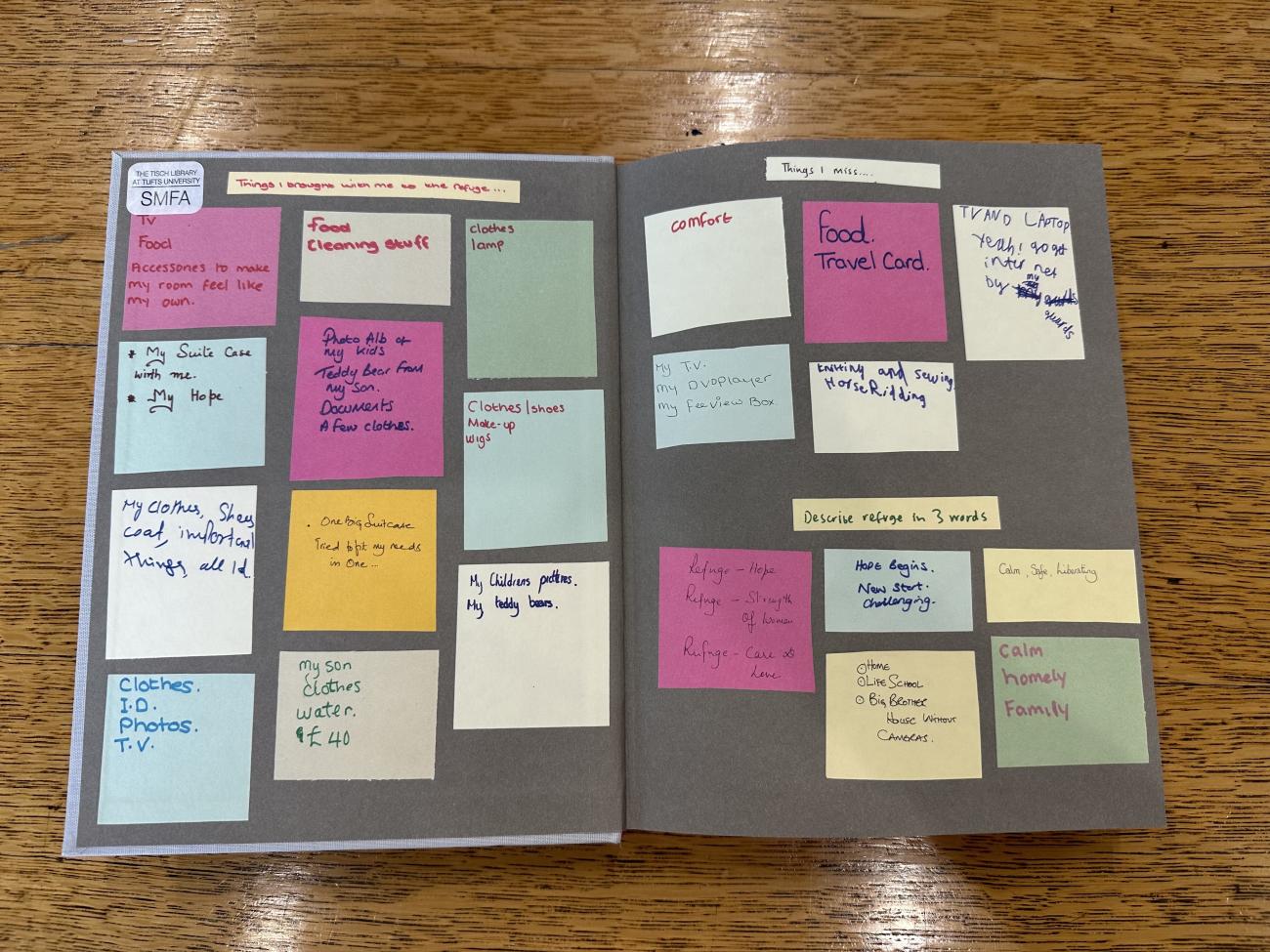
The cover of the book mimics the drawings and workshops that the women create which are found within the book. The childlike drawing connects to the experience of these women starting life again; they have this sense of innocence as they start from scratch like a child with hope in their eyes. The simple drawing of a house also serves to keep the anonymity of the refuges and the stories. The endpaper includes post-it notes written by the women in refuge in their workshops and starts the reader off with a bit of context of what is to come.
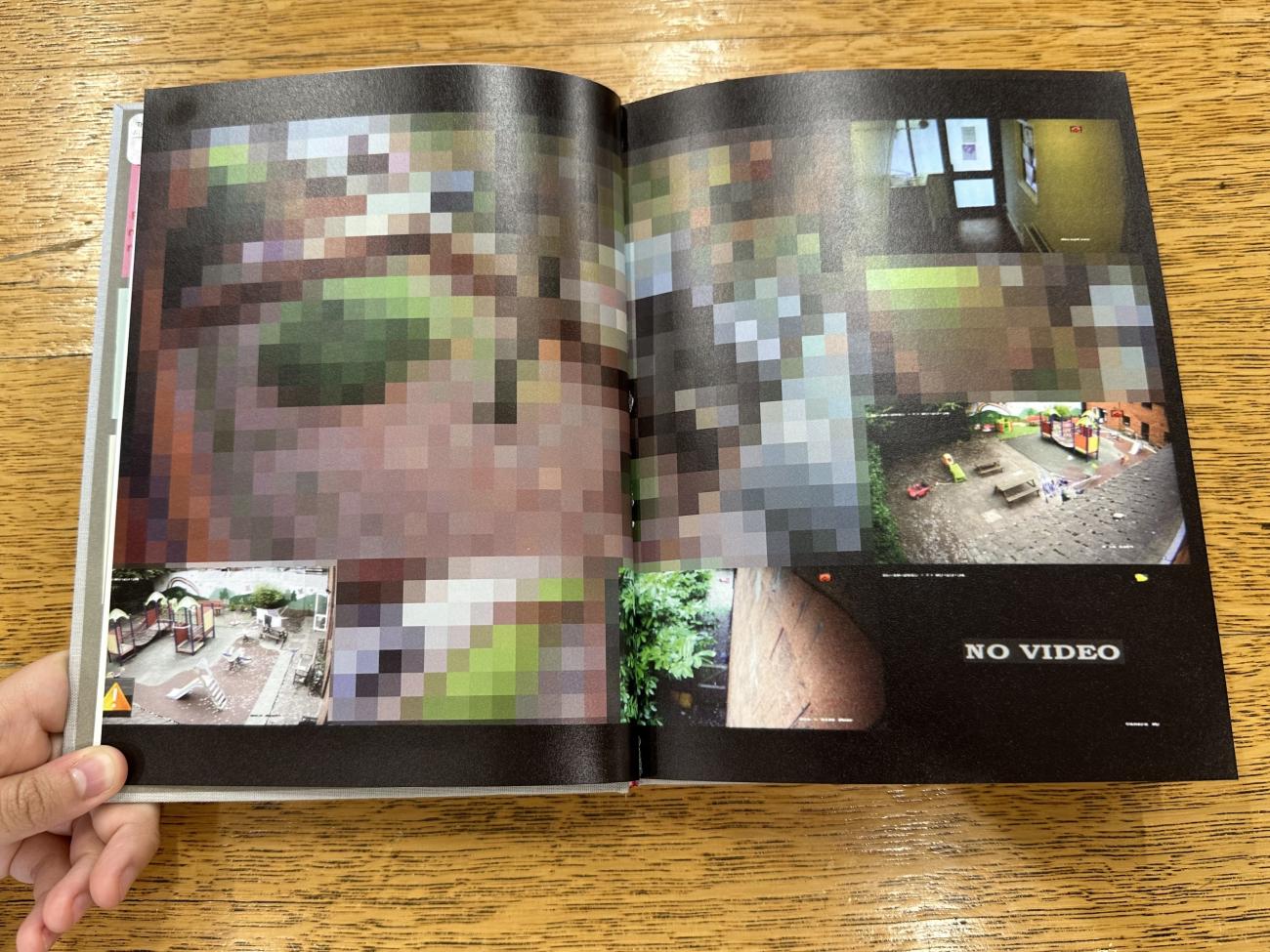
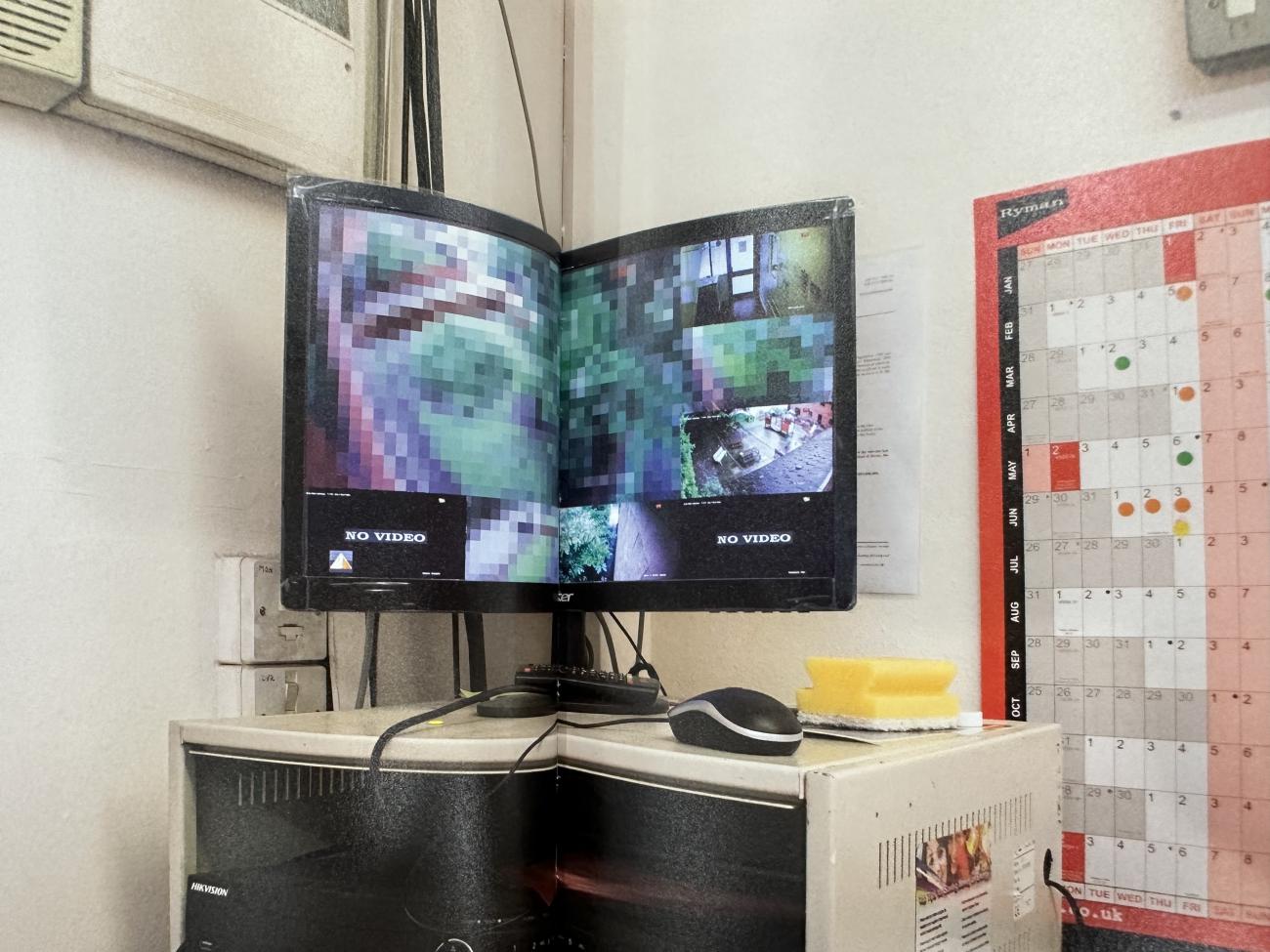
The conceptual framework of A Room of Their Own starts off with the layers of protection found in the refuge as we get these images of surveillance cameras looking at the external and internal spaces of the center. This tone of needing safety, security, of needing to be watched shifts throughout the book as women progressively grow and make their way out of refuge.
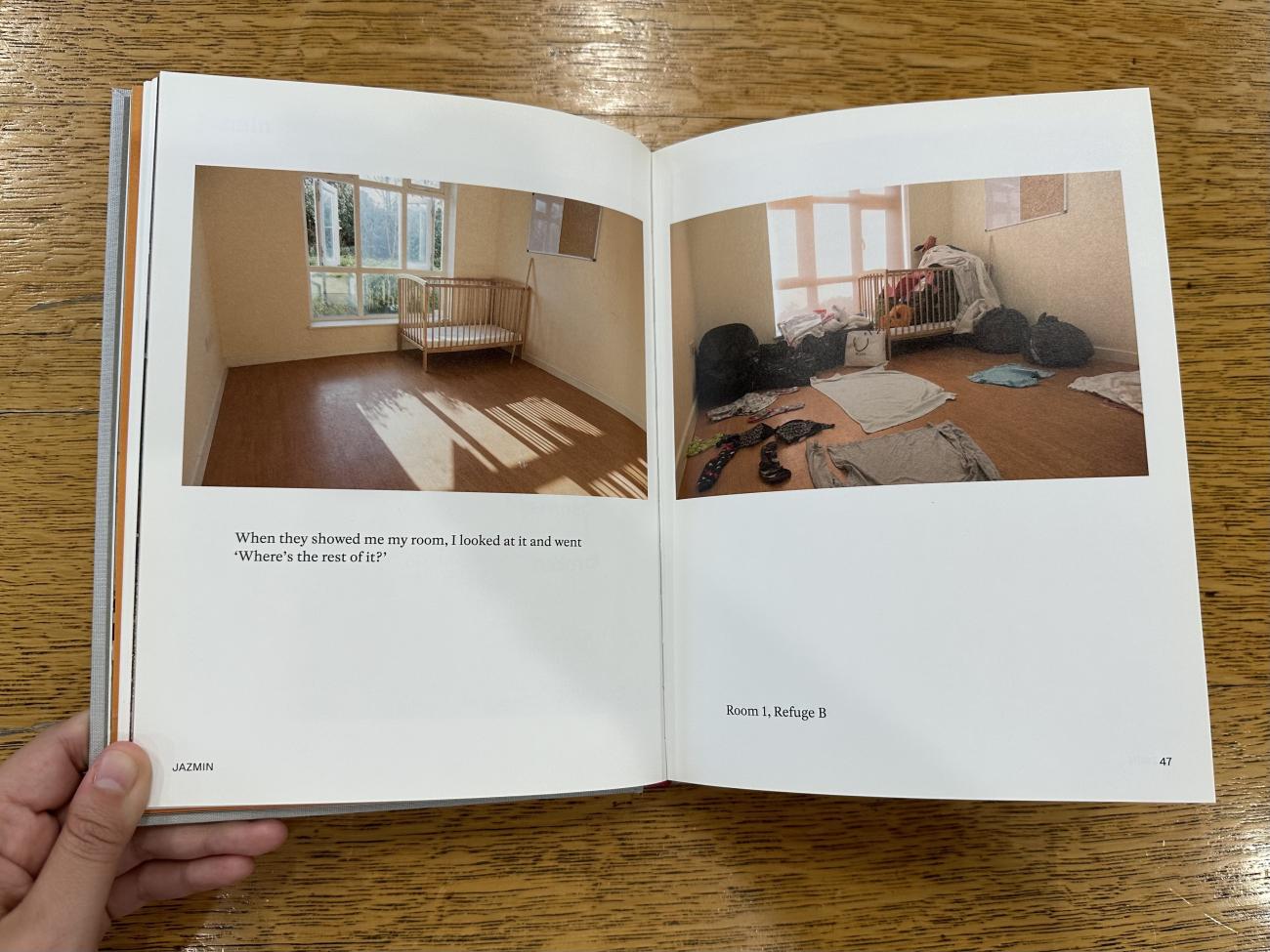
The beginning section of the book feels like it is shy, holding out from us a bit as you feel a tension in what the women share with us. The visual narrative emphasizes the absence of the women that are speaking to protect their identities, but aside from this the true portraits of them are really the vacant images of their rooms. This is where they start a new life and it is a powerful and intimate imagery to have of them.
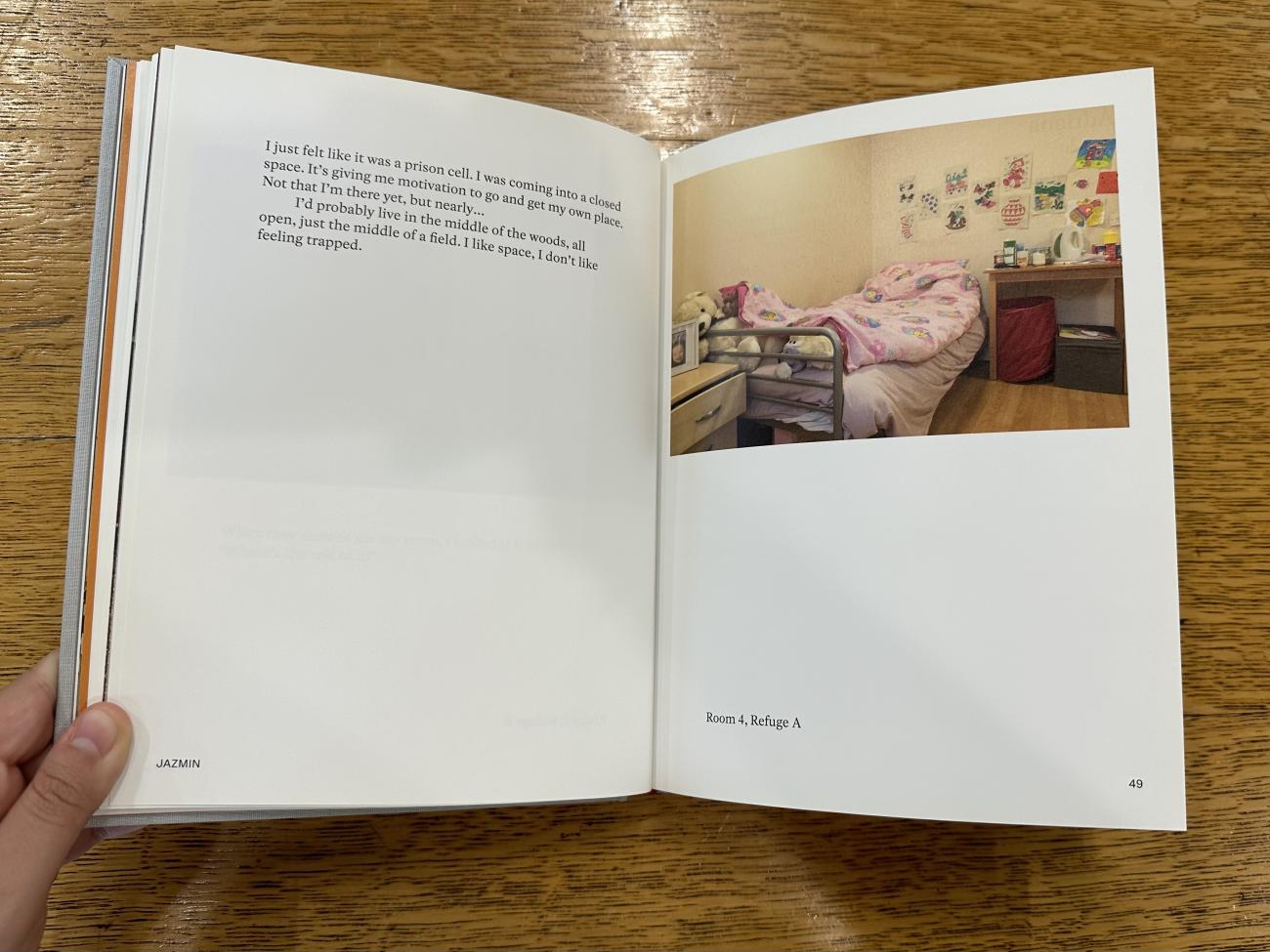
The spreads are quiet and intimate. The pairing of the rooms with the text from the voice of the women, creates a space where you can almost hear their voices. It feels like you are sitting in their room, listening in the warmth of this newfound beginning of their lives. Every spread tells us the name of the women whose story is being told, and each photograph is labeled with Refuge (A, B, C, D…) and the room number.
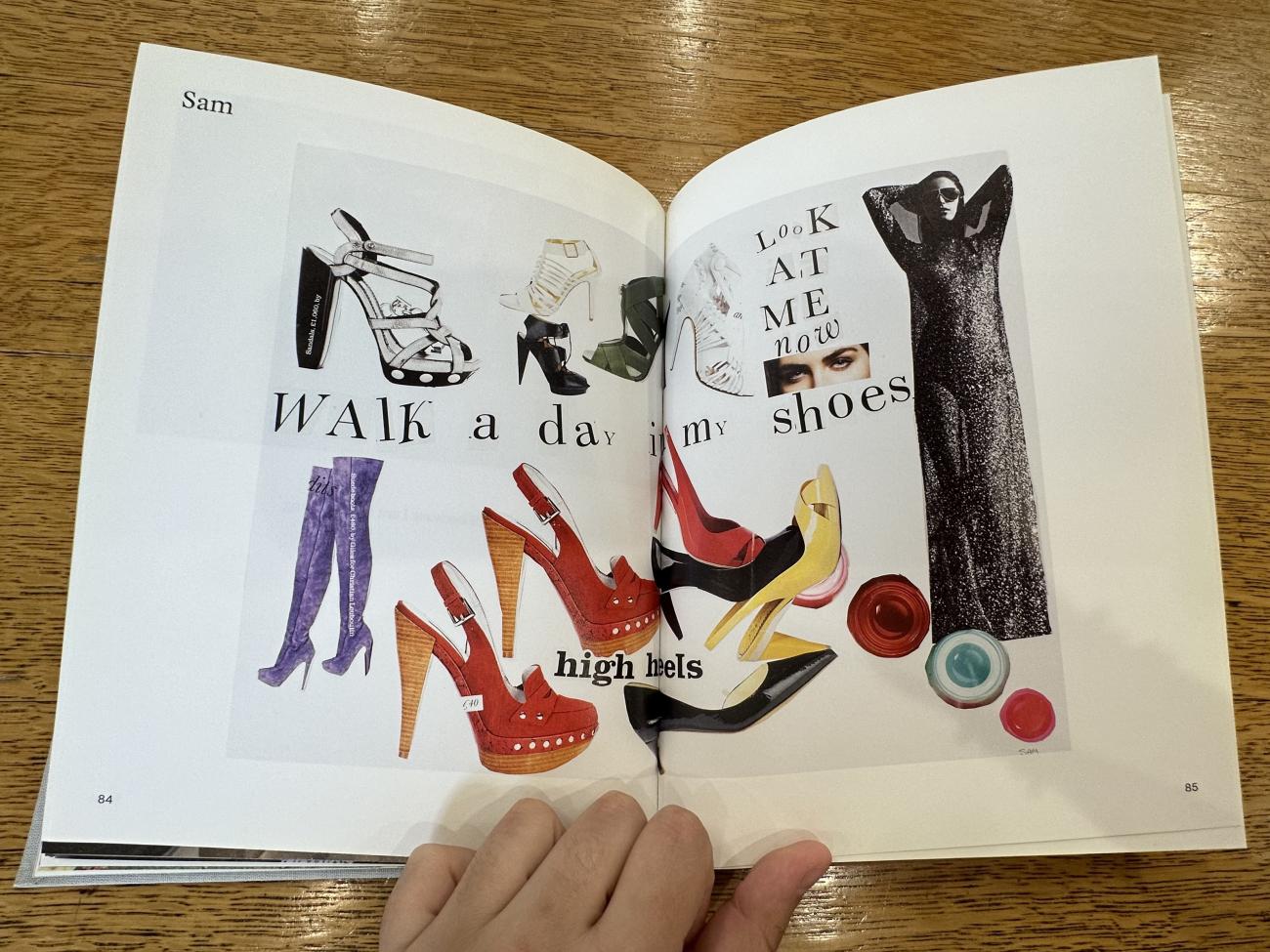

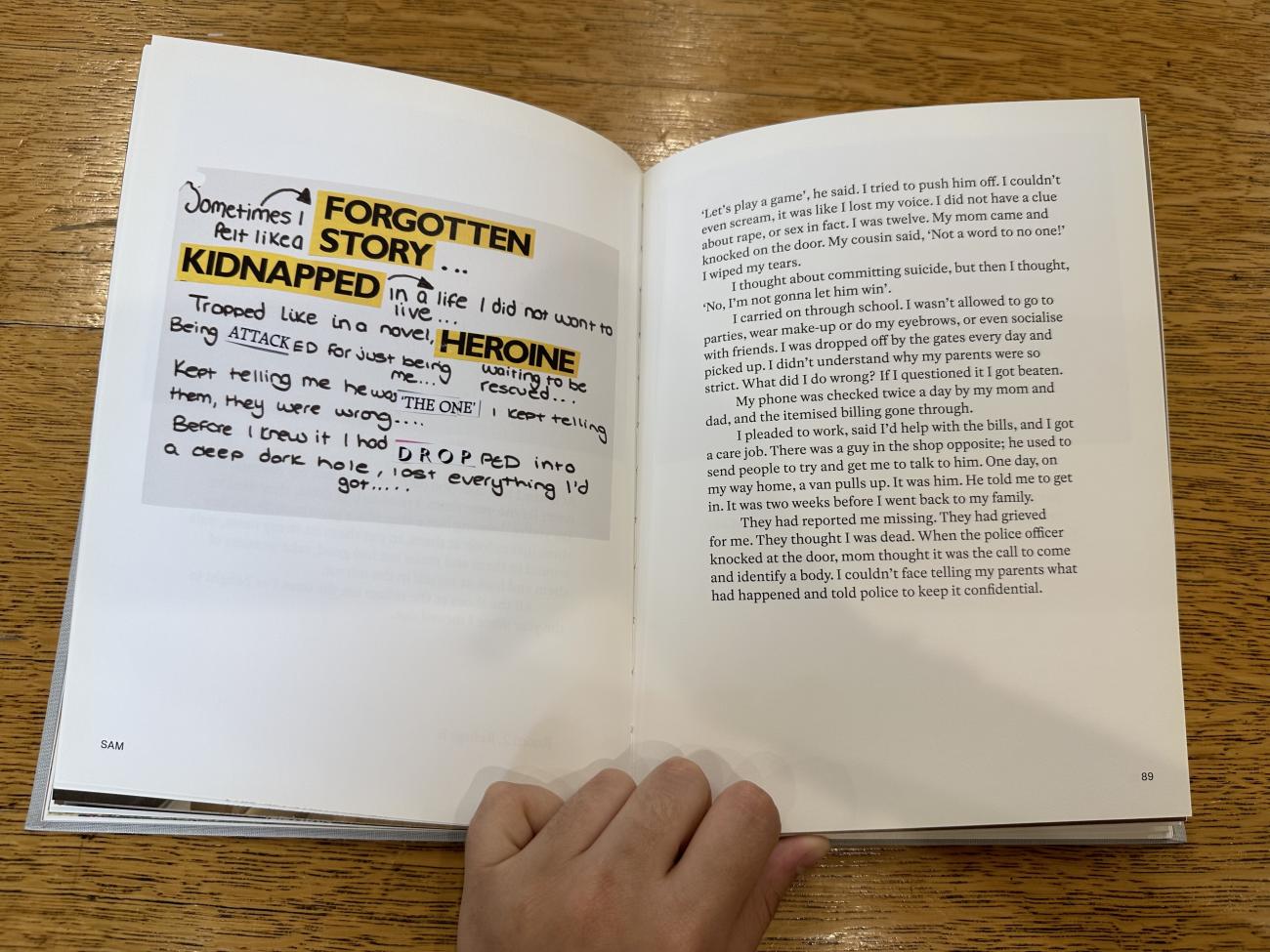
As the book progresses, we get spreads that feel more genuine to women as we see the artwork and writing created during workshops hosted by Susan in the refuge. These images are sincere and demonstrate the voices, wants, and needs of the women. It is impactful to see the women’s stories in their handwriting juxtaposed by the more distant and edited typography used in transcribing their stories in other spreads.
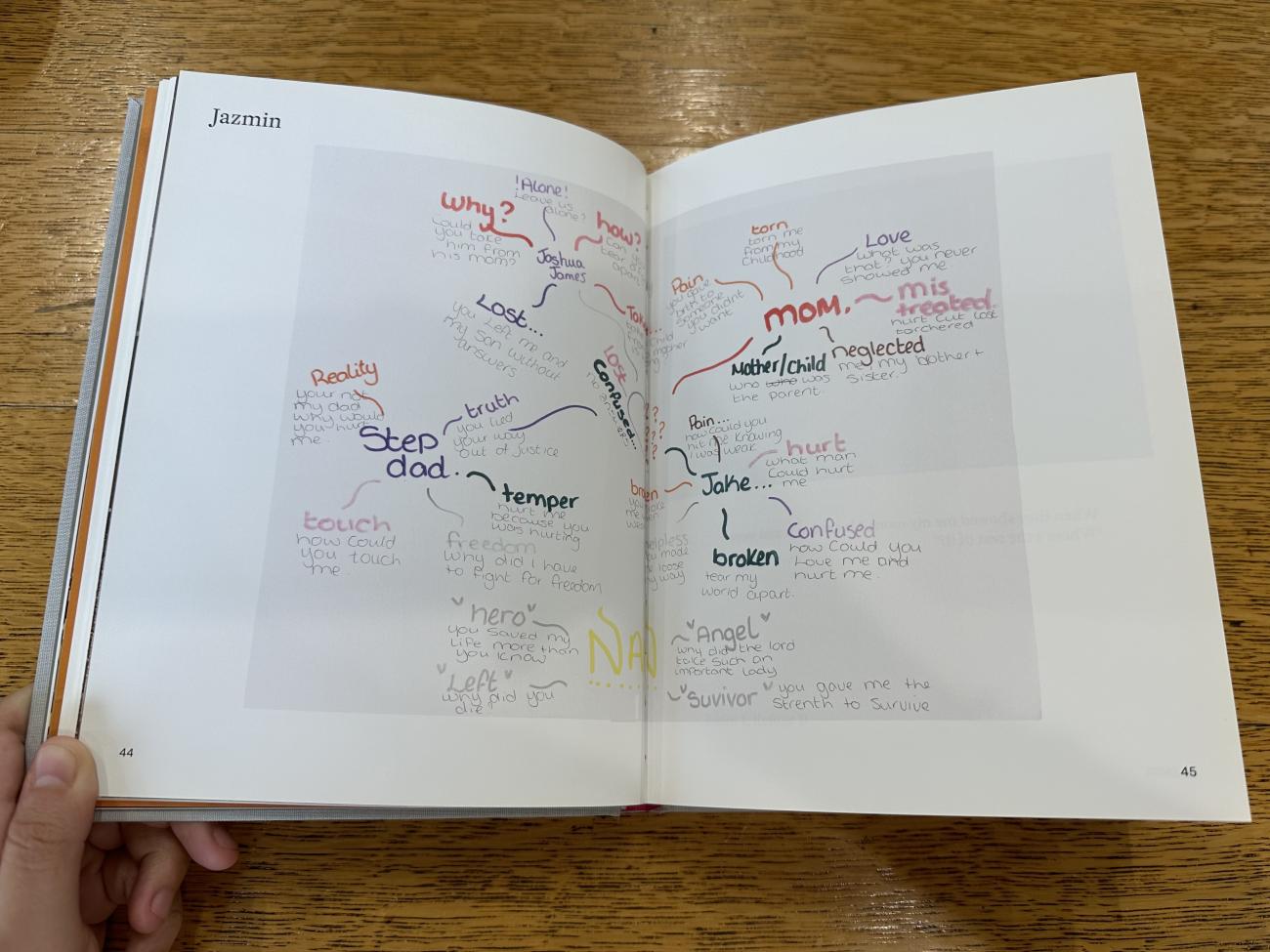
Tilak is the heart of the book; she is right in the middle of it all. Tilak shares her story, her drawings, pages of her diary, and this is when we are granted with this precious access into this person's vulnerable thoughts and hard story. From here on the women who share their stories seem more comfortable with opening up, showing their faces, and giving us more detailed and explicit access into their lives.
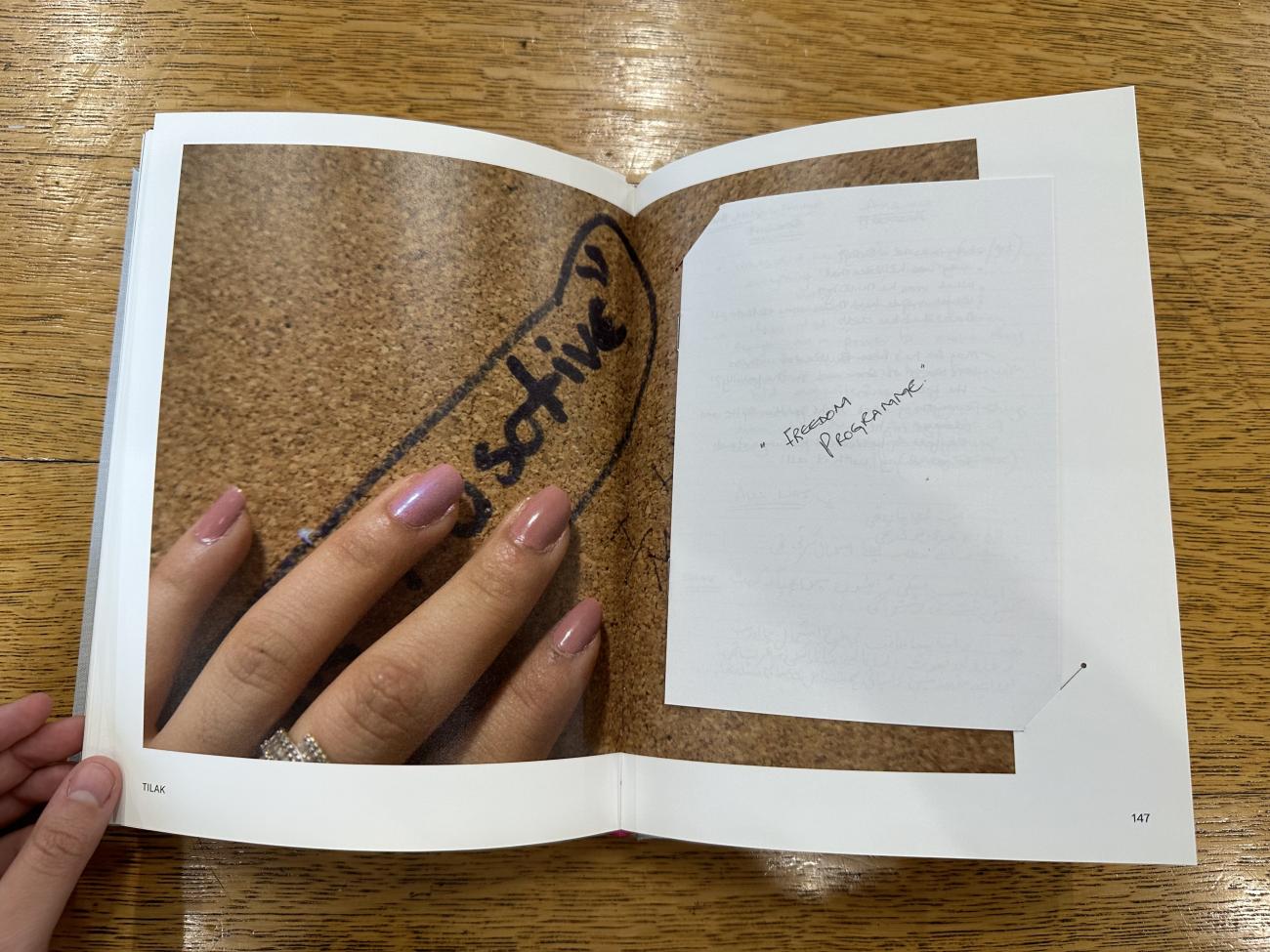

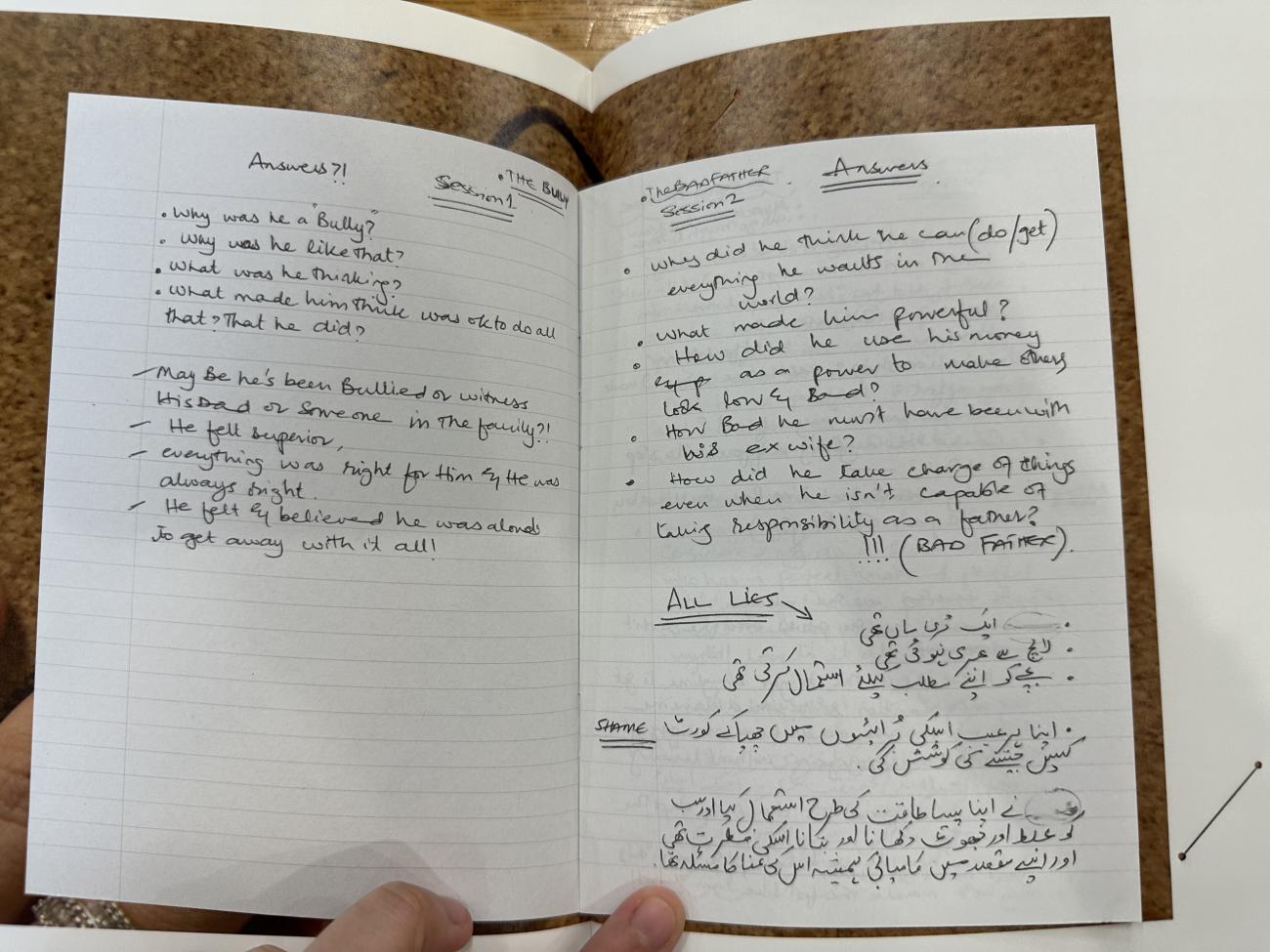
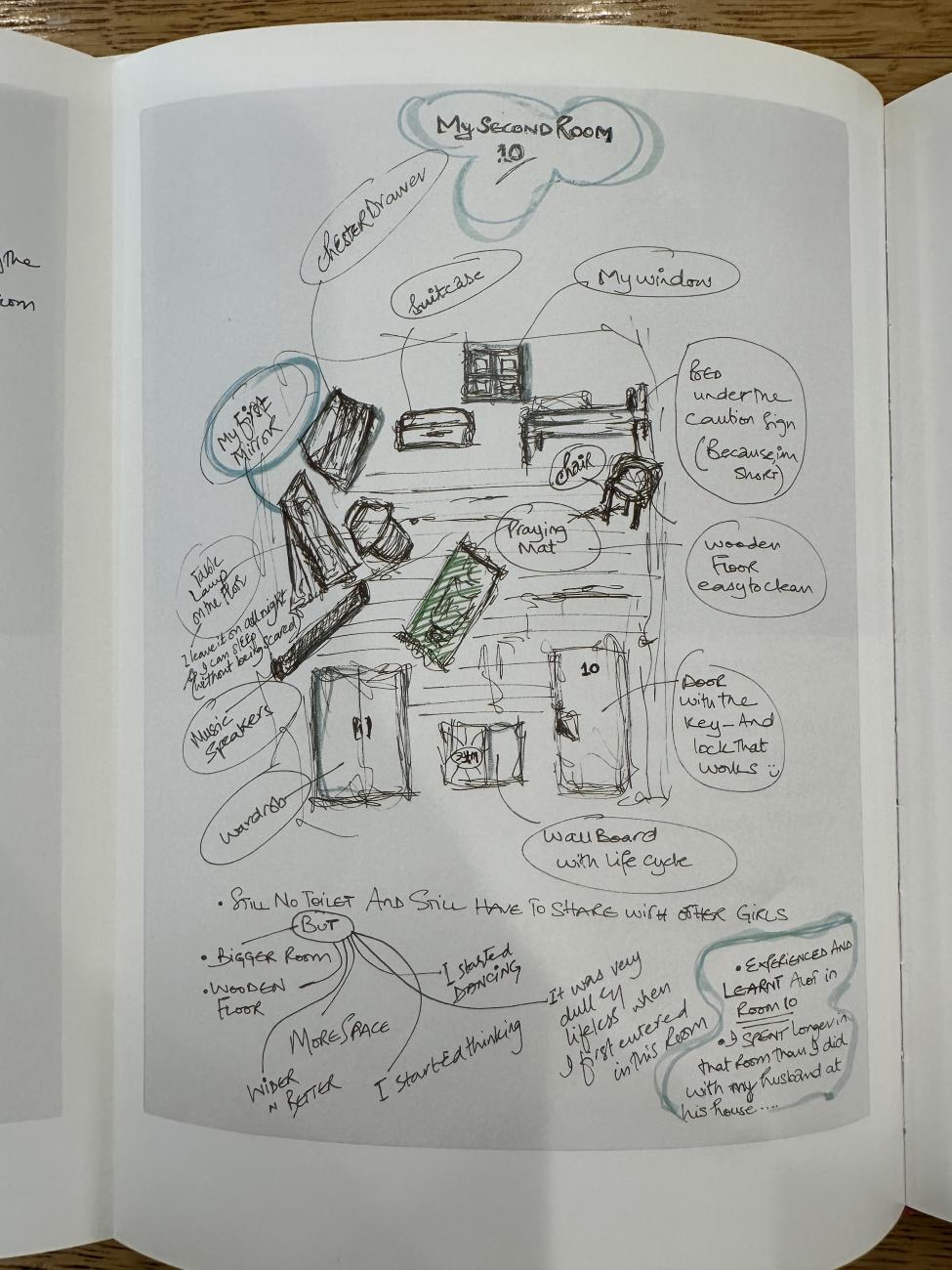
Tilak’s entries are printed on a booklet that you can detach from the book and hold as if you have her actual diary in your hands, creating a close read and connection to her shared thoughts. This way of providing the stories in such an unfiltered way also adds more authenticity to the book that the typography can’t replicate in other spreads. Although, it is important to add that the typography serves another purpose as it tells us these stories from a first person edited point of view, allowing other women the privacy they wanted. This is a great juxtaposition to have. Additionally, these entries contain text in Farsi that might not be readable for some. We don’t know what she is processing herself in these parts, but it creates a layer of privacy for the woman. This section acts as an invitation for women to think about these issues that they may be confronting themselves and showing the shared questions women are facing in refuge.
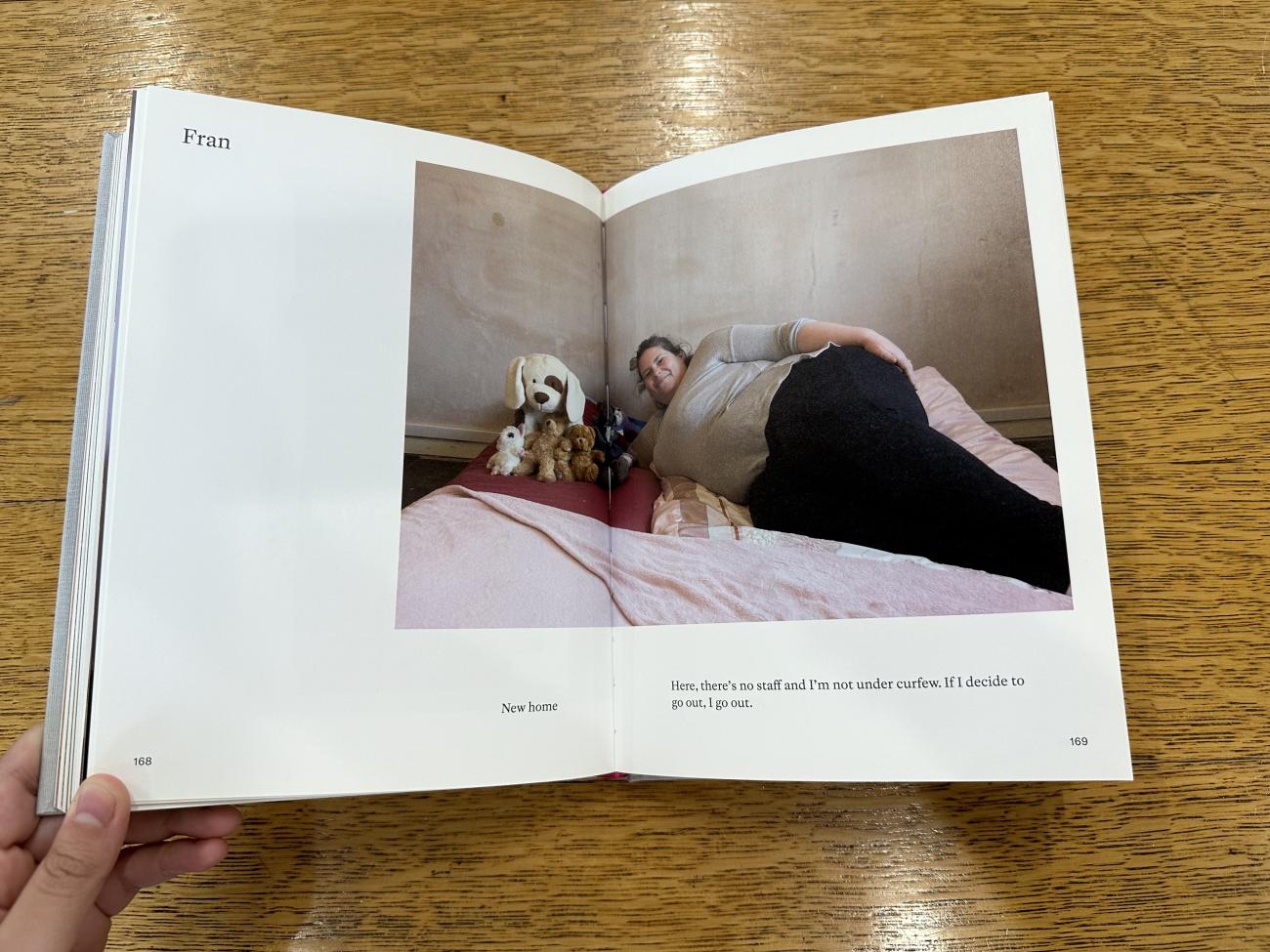
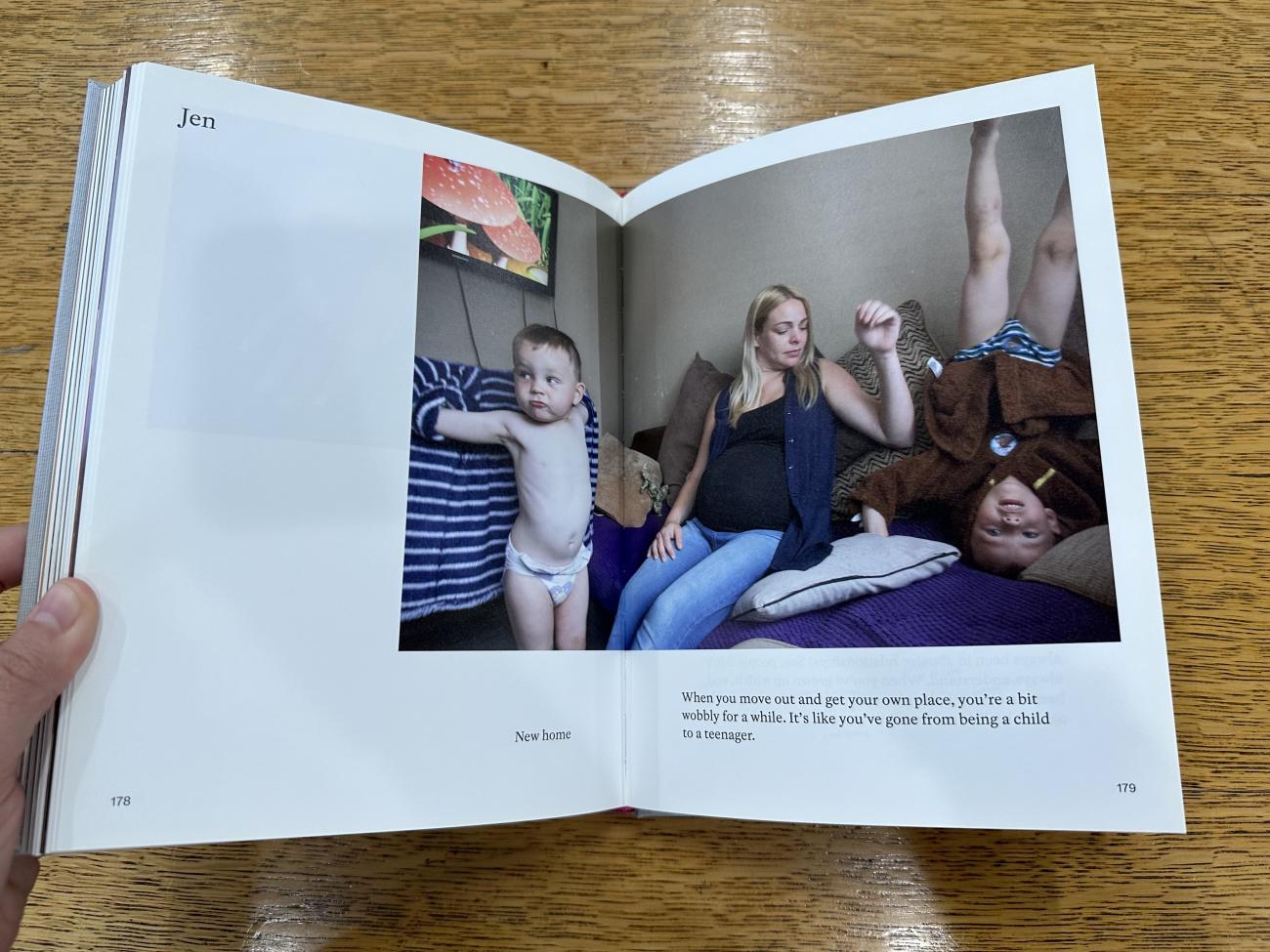
By the end of the book, we can see some of the women’s faces. Some of them are out of refuge and came back to volunteer and help the women who are currently in the situation they were once in. Others grew closer and more comfortable with Susan Meiselas throughout the project and felt safe enough to show their identities. It felt sudden to see these women’s faces but it represents a shift in the book, in the tone, and in the stories of these women. They represent the freedom and success in building a life from the refuge.
The book really served to help other women and workshops came to be because of this publication. The women would set up a table at a market placed in the same neighborhood of the refuges, creating a space of reflection and advocacy for them. They did a series of workshops to raise awareness, creating artwork and adverts for the project in which some of the women participated. All in all, I believe A Room of Their Own was very successful and intentional in its storytelling. It never felt flashy or superficial, and the constant feeling of collaboration between Susan Meiselas and the women and staff at the refuge served for this to be a genuine and heartfelt project.
Related books in the library collection
Mediations
Susan Meiselas, 2018
A view of a room
Susan Meiselas, 2018
Prince Street girls
Susan Meiselas, 2017
On the frontline
Susan Meiselas, 2017
In history
Susan Meiselas, 2008
Carnival strippers
Susan Meiselas, 2003
Pandora's box
Susan Meiselas, 2001
Kurdistan: in the shadow of history
Susan Meiselas, 1997
Nicaragua, June 1978-July 1979
Susan Meiselas, 1981
